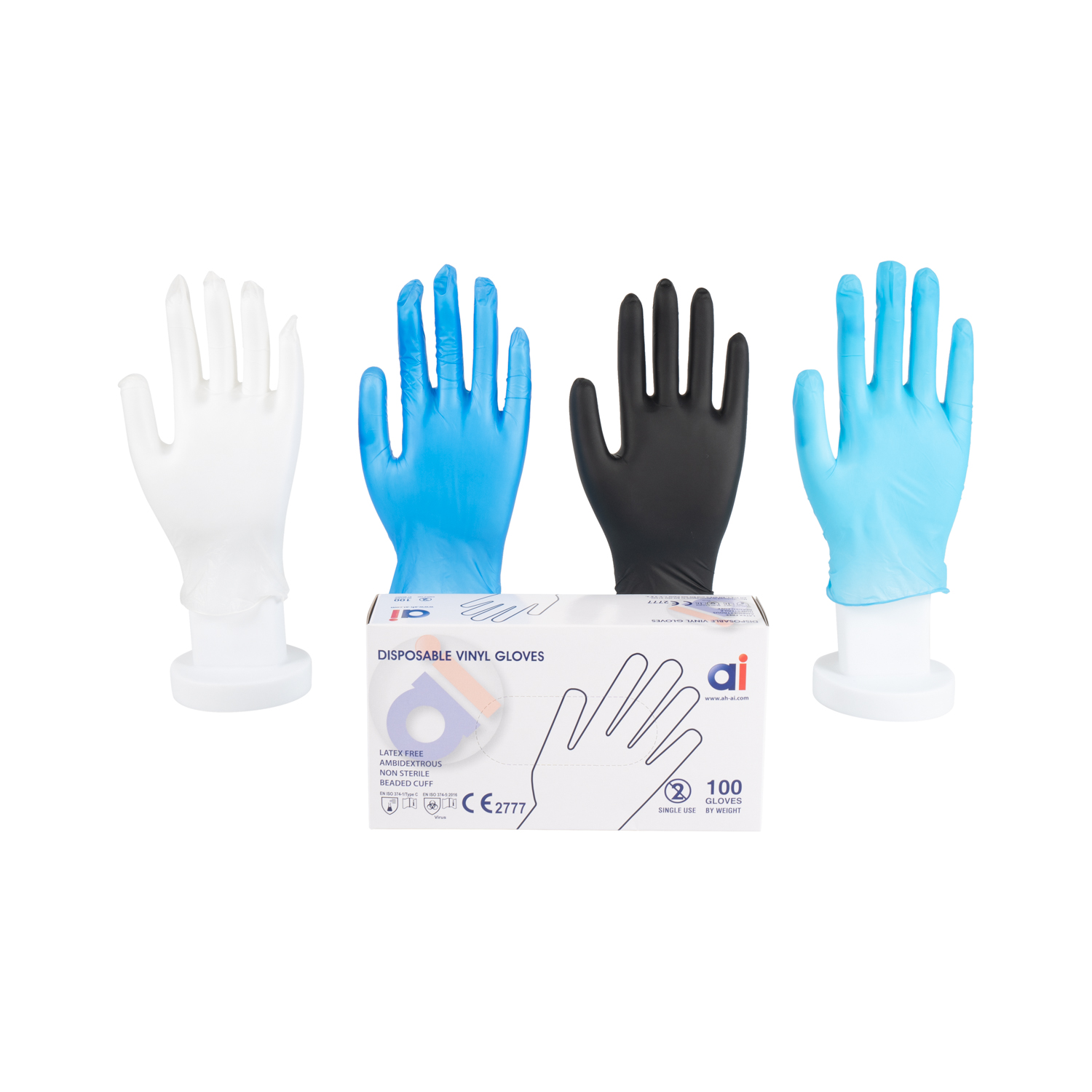
The process of using gloves will most likely raise some questions that will make you question yourself. In the following article, AI (Advance International Corp) will answer the 5 most common questions users have when using nitrile gloves.
Are nitrile gloves good oil resistance?
The ability of resistance to oil of Nitrile gloves is “inherited” from the material that makes it. Synthetic rubber has good oil resistance. So it can be used as the main material in making fuel lines, gaskets, rollers or other products that use in required oil resistance environments.
Most Nitrile gloves are resistant to 3 main types of oil:
– Body oil: The oil that the human body produces to keep the skin moist.
– Fixed oil: Fixed oils are commonly used in food, cosmetic, and healthcare settings. To make it easy to imagine, this is an oil that appears a lot in daily life such as olive oil, coconut oil, argan oil… Because these oils are non-volatile, they are called fixed oils.
– Petroleum: Petroleum exists in three forms: solid, liquid, and gas. From petroleum, people create many different products used in daily life such as mineral oil (vaseline), paraffin wax (cosmetic, polish, candle wax…), detergents wash, toothpaste…
Can sanitizer be used on nitrile gloves?
In some cases, in order not to wash hands too many times, people choose to wear gloves. However, sometimes careless wearing of gloves also increases the possibility of cross-contamination. The question is, can hand sanitizer be used for gloves? And will it reduce the durability of the glove?
In fact, nitrile gloves have good resistance to various chemicals, alcohol is one of them. Ethyl and ethanol are two types of alcohol easily found in hand sanitizers. This is a fairly safe ingredient, so it could be used directly to disinfect hands before eating. Experiments show that, after exposing nitrile gloves to two types of alcohol more than 20 times, there is still no significant physical change in the glove material. Therefore, gloves still provide good protection for the wearer.
Also, another common alcohol used in disinfecting cleaning products is isopropyl. This is alcohol that should not be inhaled or swallowed. However, it also does not affect the texture of the nitrile gloves.
Why do nitrile gloves change color after wearing for a time?
In the process of using nitrile gloves, especially those with bright colors such as white or blue, sometimes you notice that the color of the gloves turns to yellow. At the same time, it also appears yellow stains on the skin. Don’t be too anxious, this color appears only as a result of some chemical reactions.
There is a certain amount of acid in our skin, which reacts with nitrile to cause discoloration. Or when the gloves exposed to other chemicals such as nitric acid, gloves will also change color. So don’t worry if your gloves change color, but maybe it’s time to change to a new one.
Are nitrile gloves resistant to all chemicals?
Synthetic nitrile rubber is resistant to corrosion and to a wide variety of substances. That makes nitrile gloves more “reliable” than other disposable gloves. However, that does not mean nitrile gloves are resistant to all chemical.
In fact, nitrile gloves have good resistance to alkaline solutions, as well as certain acidic solutions. In case of contact with strong alkaline solutions, the glove material can be damaged and deteriorate on contact. In general, the ability of acid resistance of nitrile gloves is better than of other disposable gloves.
Are glove color and quality related?
Nitrile gloves have a variety of colors, which leads many people to ask the question: “Does color affect the quality of gloves?” The answer is “No”. Color does not affect the durability and protective of Nitrile gloves.
The process of coloring gloves is similar to adding dye in the manufacturing process. So it does not affect the quality of the gloves. Traditional Nitrile gloves are blue in color for the purpose of easily distinguishing them from latex gloves. Due to the market’s demand for a variety of colors, Nitrile gloves now have many other colors such as white, purple, black, green…





发表回复